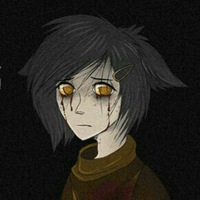
Объясните значение слов: бронза, пехотинец, боевая колесница, дышала, возница, колесничий дротик,
наёмное войско. ответьте на вопросы: каким оружием пользовались египетские воины, как были устроены колесницы? какую роль они играли в сражениях? , какие египтяне описывали судьбу простого воина в походе?срочно!!! прошу вас 0
0
 0
0
Ответы на вопрос
 Внимание! Ответы на вопросы дают живые люди. Они могут содержать ошибочную информацию, заблуждения, а также ответы могут быть сгенерированы нейросетями. Будьте внимательны. Если вы уверены, что ответ неверный, нажмите кнопку "Пожаловаться" под ответом.
Внимание! Ответы на вопросы дают живые люди. Они могут содержать ошибочную информацию, заблуждения, а также ответы могут быть сгенерированы нейросетями. Будьте внимательны. Если вы уверены, что ответ неверный, нажмите кнопку "Пожаловаться" под ответом.

Объяснение:
Бро́нза - сплав меди.
Пехотинец - Боец пехоты.
Боевая колесница - двухколесная, открытая сзади повозка, запряж. парой или четверкой лошадей, в которой помещалось два или более воинов.
Дышло - оглобля между двумя лошадьми, прикрепляемая к передней оси
повозки при парной запряжке и служащая для поворота повозки.
Возница - Тот, кто правит лошадьми в упряжке, кучер.
Колесничий - тот, кто управляет лошадьми, запряженными в колесницу (по
совместительству и конюх, и немного механик, чтобы чинить колесницу).
Дротик - метательное оружие, представляющее собой копьё, несколько
уменьшенное и облегчённое по сравнению с копьями для конного или
рукопашного боя.
Наемное войско - чужеземцы, получавшие плату из казны за охрану фараона.
1. Мечи, копья, луки, топорики.
2. Колесница представляла собой повозку, рассчитанную на 2-3 воинов (возница, лучник и пехотинец). В повозку запрягали лошадей, устанавливали лезвия. Колесницы обходили врагов с флангов и атаковали тыл.
3. . На долю простого воина приходилось самое тяжелое. Он сражался, выполнял разнообразные поручения и был задействован на работах.
 1
1
 0
0

Ответ:
Бро́нза — вид металлического сплава меди с другими металлами, которые присутствовали в рудах, добываемых древним человеком
пехотинец-это воин, который сражался в пешем бою
Боевая колесница – это одно из первых устройств, которое использовалось человеком в истории при ведении военных действий
возница-это человек, который управлял лошадью, запряженной в колесницу.
колесничий дротик - метательное оружие, представляющее собой копье, несколько уменьшенное
наёмное войско - войско, состоящее из наёмных солдат.
каким оружием пользовались египетские воины?- Мечи, копья, луки, топорики
как были устроены колесницы? какую роль они играли в сражениях? -Колесница представляла собой повозку, рассчитанную на 2-3 воинов (возница, лучник и пехотинец). В повозку запрягали лошадей, устанавливали лезвия. Колесницы обходили врагов с флангов и атаковали тыл.
какие египтяне описывали судьбу простого воина в походе?-На долю простого воина приходилось самое тяжелое. Он сражался, выполнял разнообразные поручения и был задействован на работах.
вроде так⇒
 0
0
 0
0

Bronze:
- Bronze is a metal alloy made primarily of copper and tin. - It is known for its strength, durability, and resistance to corrosion. - Bronze has been used for various purposes throughout history, including for making weapons, tools, and decorative objects. - In ancient times, bronze was highly valued and played a significant role in the development of civilizations. - The Bronze Age, a period characterized by the widespread use of bronze, marked a significant advancement in human history.Infantry:
- Infantry refers to soldiers who fight on foot. - They are typically equipped with various weapons, such as swords, spears, bows, and shields. - Infantry units have played a crucial role in warfare throughout history, providing the backbone of many armies. - They are often used for close combat, defense, and occupying and holding ground.War Chariot:
- A war chariot, also known as a battle chariot or combat chariot, is a type of horse-drawn vehicle used in ancient warfare. - It was primarily used for transportation and as a mobile platform for archers or spear-throwers. - War chariots were often manned by two warriors, a driver and an archer or spearman. - They provided a fast and maneuverable platform for attacking enemy forces and were particularly effective against infantry.Breath (Dysaule):
- The term "breath" or "dysaule" refers to a type of musical instrument used in ancient Greece and Rome. - It was a wind instrument similar to a flute or a pipe. - The breath was typically made of bronze or other metals and had a series of holes along its length. - It was played by blowing air into one end and covering and uncovering the holes to produce different notes.Charioteer:
- A charioteer, also known as a chariot driver, is a person who drives a chariot. - In ancient warfare, charioteers were skilled individuals responsible for controlling and maneuvering the war chariot during battle. - They played a crucial role in ensuring the effectiveness and mobility of the chariot on the battlefield.Dart (Javelin):
- A dart, also known as a javelin, is a type of throwing weapon used in ancient warfare. - It is a long spear-like weapon designed to be thrown at the enemy. - Darts were commonly used by infantry and charioteers to engage enemy forces from a distance. - They were effective against both infantry and cavalry and could disrupt enemy formations.Mercenary Army:
- A mercenary army refers to a military force composed of professional soldiers who are hired to fight for a particular cause or nation. - Mercenaries are individuals who are motivated by financial gain rather than loyalty to a specific country or cause. - Throughout history, mercenary armies have been employed by various nations and rulers to supplement their own forces or to fight on their behalf. - Mercenaries often played a significant role in ancient warfare, providing specialized skills and expertise.Egyptian Warriors and Chariots:
- Egyptian warriors in ancient times used a variety of weapons, including bows and arrows, spears, swords, and axes. - They also utilized chariots as a significant component of their military strategy. - Egyptian chariots were typically manned by two warriors, a driver and an archer or spearman. - Chariots provided the Egyptians with a mobile and versatile platform for attacking enemy forces and were particularly effective against infantry. - They played a crucial role in Egyptian warfare, allowing for rapid movement, flanking maneuvers, and the ability to strike at vulnerable enemy positions.Fate of a Common Warrior:
- The fate of a common warrior in ancient Egypt during a campaign or military expedition would vary depending on the outcome of the battle. - If the Egyptian forces were victorious, the common warrior would likely return home with honor and potentially receive rewards or recognition. - However, if the Egyptians were defeated, the common warrior could be captured by the enemy, killed in battle, or forced to retreat. - The life of a warrior in ancient times was often filled with risks and uncertainties, and their fate was closely tied to the outcome of the battles they fought in.Please let me know if there is anything else I can help you with!
 0
0
 0
0
Похожие вопросы
Топ вопросов за вчера в категории История
Последние заданные вопросы в категории История
-
Математика
-
Литература
-
Алгебра
-
Русский язык
-
Геометрия
-
Английский язык
-
Химия
-
Физика
-
Биология
-
Другие предметы
-
История
-
Обществознание
-
Окружающий мир
-
География
-
Українська мова
-
Информатика
-
Українська література
-
Қазақ тiлi
-
Экономика
-
Музыка
-
Право
-
Беларуская мова
-
Французский язык
-
Немецкий язык
-
МХК
-
ОБЖ
-
Психология
-
Физкультура и спорт
-
Астрономия
-
Кыргыз тили
-
Оʻzbek tili

























